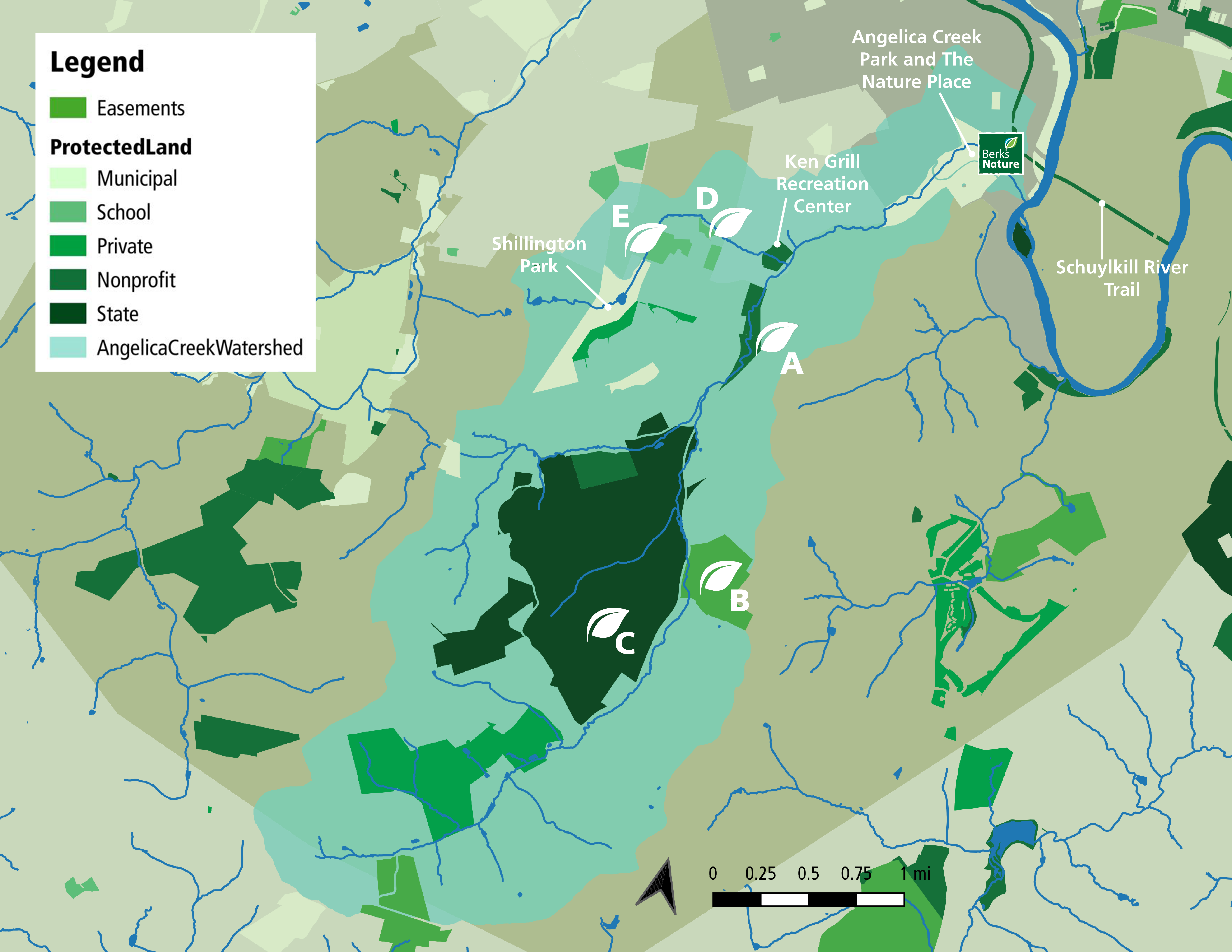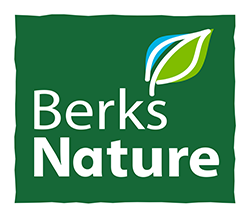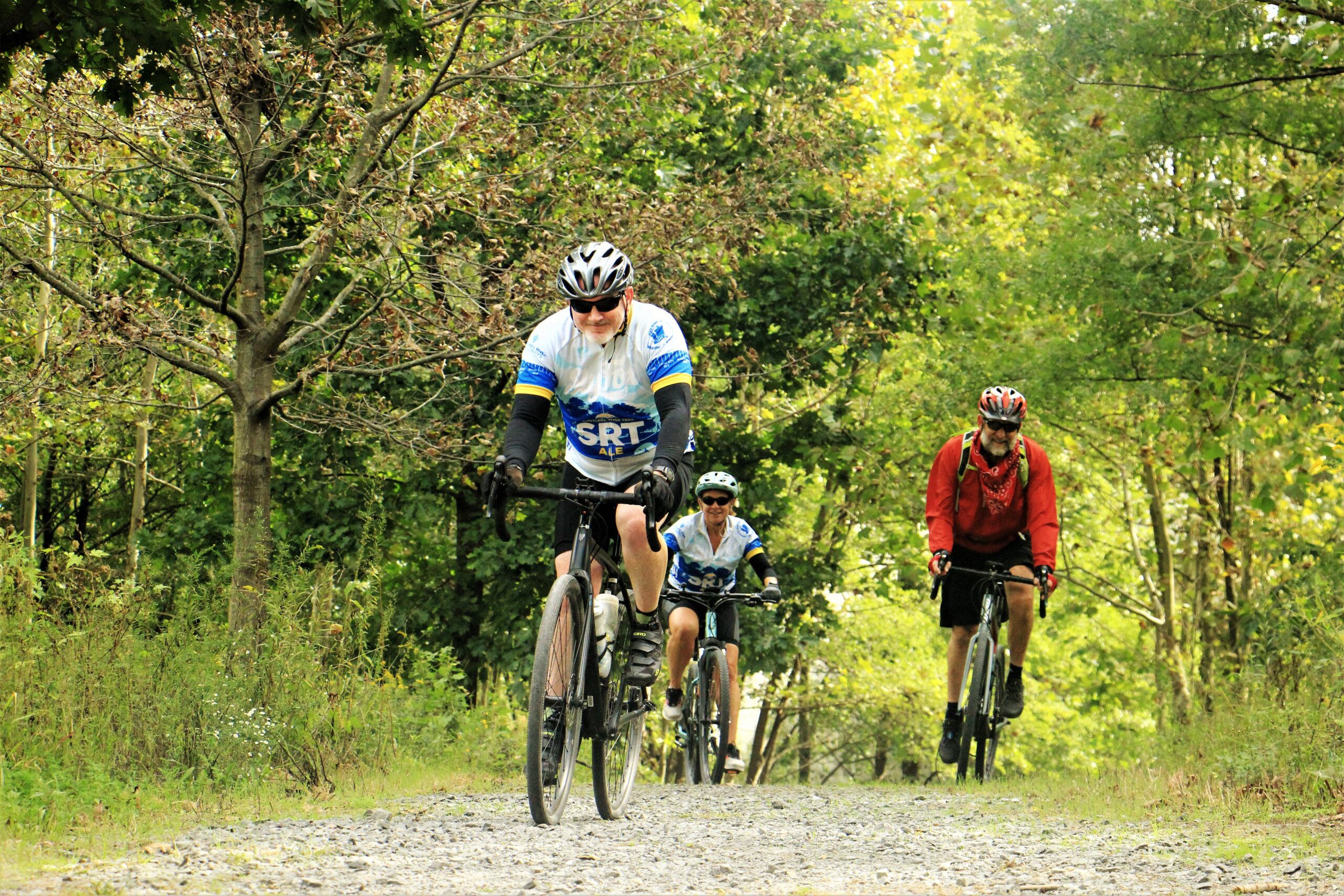Across the nation, people are eager to get outside. Since the COVID pandemic began in early 2020, participants in outdoor recreation has increased by 6.9% (though it is worth noting that consistent or “core” participants, who engage in outdoor recreation more than 51 times a year, have declined by about 13% since 2007).
Here too in Berks County enthusiasm for outdoor recreation is on the rise and has been for the last 15 years.
One popular solution for addressing increased public interest in outdoor recreation while safeguarding the sensitive habitats and ecological functionality in these spaces is the development of “greenways”.
A greenway, in its simplest terms, is a corridor of open space.
Greenways can vary greatly in their scale and setting ranging from narrow ribbons of green to wide mosaic bands of open spaces, incorporating natural, cultural, and scenic features. They can thread delicately through urban and suburban communities or stretch comfortably across rural and rugged landscapes.
Some greenways primarily support recreation and are centered around trail systems for walking, biking, or other passive forms of outdoor exploration. Other greenways prioritize environmental values, protecting ecosystem services and providing thruways for wildlife to move between patches of habitat; these greenways often exclude human passage.
However, all greenways are united by two common functions: protect and connect.
Think of a greenway network like a wheel, with several spokes radiating out from a central hub. In the greenway network model, the wheel’s hub are sites with natural, cultural, or historic value – a state park for example – and the spokes are the greenways themselves. Unlike a single wheel, greenway networks consist of several hubs, and those spokes – the greenways – connect hubs to one another.
More and more often, major cities and municipalities are looking to greenway networks as a way build up a community’s green infrastructure enhancing environmental protection, access to outdoor recreation, and quality of life for greenway communities.
Pennsylvania, and Berks County, are no different.
According to a survey conducted by the Pennsylvania Greenways Partnership Commission in 2001, about 80% of Pennsylvanians surveyed reported that they had used a greenway and 93% supported additional greenways for their community.
A county-wide greenway system connecting Berks’ major park, recreation, and open spaces is called for in the Berks County Comprehensive Plan 2030 Update. This updated plan highlights the Berks County Greenway, Park and Recreation Plan, an addendum adopted to the comprehensive plan in 2007 that provides recommendations for identifying, protecting, and preserving the County’s historic sites and districts.
Capitalizing on this momentum, Berks Nature produced its own greenway feasibility study for the Angelica Creek watershed in 2010.
In this study, Berks Nature identified several historic, cultural, and recreational resources in the Angelica Creek watershed and described potential greenway opportunities to connect these community hubs together locally and with a greater, regional greenway network through the Schuylkill Heritage Corridor and Schuylkill River Trail.
Greenway plans like this represent conservation at a larger (and in this case watershed-level) scale, which provides more opportunities for creative problem solving, planning, and networking. Conservation at this scale considers not just the ecological needs of a landscape, but imagines a future of healthy coexistence between people and nature.
Thirteen years later, great progress has been made in creating these greenway connections. Between state agencies and conservation non-profit holdings, a total of 1,418 acres of the Angelica Creek watershed are now protected from development, that’s 30% of the entire watershed.

A – ANGELICA GREENWAY PRESERVE
In 2022, the stars of opportunity and preparation aligned. First, Berks Nature assumed ownership of 12 acres of land, previously owned by the City of Reading and the former site of the historic Angelica Ice Dam. Additionally, after two years of coordination, Berks Nature acquired an additional 15 acres of land. These two properties are adjacent to one another, creating a contiguous, 27-acre swatch of riparian woodlands.
Collectively this land is known now as the Angelica Greenway Preserve, a private preserve with no trails, parking, or public access whose woodlands shelter the Angelica Creek. The new Angelica Greenway Preserve includes both historic and conservation features prioritized by the Angelica Greenway Feasibility Study, representing a key step forward in building this greenway network and healing past environmental wounds driven by industrialization.
B – CONSERVATION EASEMENT
Cumru Township | 76.35 acres
Berks Nature holds a conservation easement on this approximately 76-acre property. Over 90% of this land is forested, protecting a tributary of Angelica Creek and extending the reach of Nolde Forest State Park’s lush, old-growth woodlands. By placing a conservation easement on this private property, land use, and in particular development rights, are limited or prohibited in perpetuity prioritizing the land’s conservation value over its utilitarian value.
C – NOLDE FOREST ENVIRONMENTAL EDUCATION CENTER
In November 2022, Nolde Forest Environmental Education Center was inducted into the national Old-Growth Forest Network. It is a great honor and a tribute to the conservation ethic that took root here to join a network that preserves and celebrates ancient forests, as just five generations ago, nearly every tree in what we know now as Nolde Forest had been felled.
It was Jacob Nolde, a German immigrant, who took up the charge to reforest the land in 1904, setting the stage for the Nolde Forest Environmental Education center – Pennsylvania’s first environmental education center – and the 700+ acres of lush, deciduous and coniferous woodlands thriving today.
In 2019, Berks Nature assisted in the acquisition and addition of about 59 acres acres to Nolde Forest; the first addition of land to Nolde Forest since its inception in 1966.
D – ANGELICA CREEK TRAIL EXTENSION
Berks Nature is currently in the process of extending the Angelica Creek Trail from its current end-point at Ken Grill Pool to Shillington Park, as suggested by the Angelica Greenway Feasibility Study. The trail extension is unique in that it will ultimately connect two popular public parks and nature centers – Nolde Forest and Angelica Creek Park, home to The Nature Place – but also serves a community need for safer pedestrian walkways. This accessible, 5-mile trail connection will provide the Governor Mifflin School District community with a safe route to their schools.
E – GOVERNOR MIFFLIN CAMPUS GREENING
In the spring of 2018, Berks Nature helped the Governor Mifflin School District plant a streamside forest of 155 native shrubs and trees alongside Rabbit Run, which runs along the border of the school district’s campus. The entire Governor Mifflin community embraced the project: senior high school students assisted with drafting the management plan, middle schoolers dug holes for the trees, while elementary students physically planted the trees and shrubs alongside Berks Nature in April.
Before the planting, this area had no environmental or educational benefit. But as the young assemblage of native trees and shrubs grows, their roots and canopies will protect Rabbit Run and improve the hydrological and biological processes occurring there. The young streamside forest also provides new, immersive education experiences as an outdoor classroom for water quality testing and other student-led projects.

